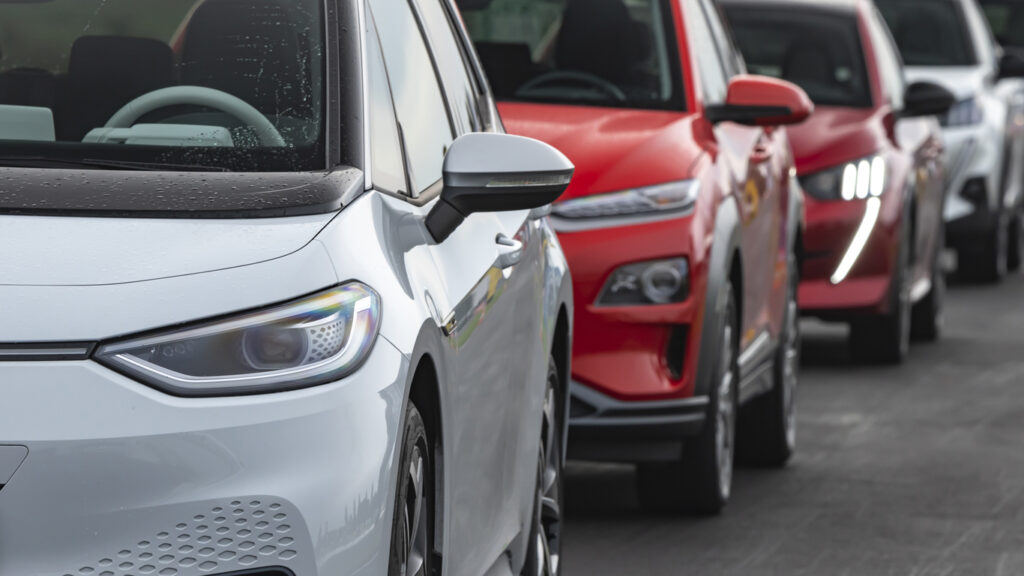Should I Buy An Electric Car?

Should I Buy An Electric Car?
Row Of Electric Vehicles Cars
We might think of electric cars being newcomers to the UK’s roads, but the prototype for the first one was developed back in the late 19th century. In recent years, car manufacturers have refined this technology, making models that are more energy efficient and technologically advanced. Nowadays, they’re a common sight on the UK’s roads, and with petrol prices climbing ever higher, the benefits of cars that cost less to run and maintain seem obvious. So, we’re sure you’re wondering about just seizing the initiative, but there’s also the chance that you’re asking yourself, ‘why should I buy an electric car?’ Read on to discover what you should consider before taking the plunge.
Green Benefits
Climate change has been a key topic in 2021, as world leaders look at ways of reducing the impact on the planet. At Cop26 the UN’s 2021 Climate Change Conference, the government, businesses and organisations who are involved in the motor industry signed a pledge, ensuring that by 2040 the only new cars on the market will be those that provide zero emissions.
This proposal means that there’ll be no new vehicles powered by petrol or diesel, with all new models being fully electric. No announcements, however, have currently been made in regards to the ownership or availability of used non-electric cars and hybrids.
Electric cars can be more expensive than their fuel-powered equivalent, and so the government offers a grant to help subsidise the cost for potential buyers. Thanks to the plug-in grant, you’re able to save £2,500 if you buy an electric car up to £35,000.
How To Charge An Electric Car
Electric Car Charging Station
During 2021, we’ve seen a large-scale increase of electric car sales in the UK compared to previous years. During September the Society of Motor Manufacturers and Traders (SMMT) recorded almost 33,000 electric car registrations here, a figure that was close to the final number sold in 2019.
If you join this growing number of greener motor enthusiasts, you might be wondering about your charging options. Charging points for electric cars can be found in public places such as petrol stations, at supermarkets and in designated city centre spots. Zap Map is a quick and easy way to see how many charging points there are in your local area.
The most affordable and convenient way to charge your electric car is by having a port professionally installed at your home. Then you can just plug-in whenever you need, leaving your car until it’s fully recharged. This also qualifies for a government subsidy but be quick as it’s being withdrawn for many homeowners at the end of March 2022. It’s also worth noting that you can only have a home charging point installed if you have off street parking, so if the cable would need to cross a pavement to reach your vehicle you may need to look at alternative charging options.
Driving Range
When considering if an electric car is the right choice, you should consider the fact that different models will be able to take you further on a single charge than others. Some of the latest electric cars can now rival the distance a conventional car can travel on a tank of fuel, while charging a battery is almost always cheaper and better for the environment.
The electric cars capable of covering the most ground sit at the premium end of the market. Tesla consistently leads the market in terms of range, while BMW provides two models able to surpass 300 miles, and Mercedes’ EQS saloon boasts a maximum range of over 450 miles.
There are more affordable options available, with models such as the long-range Fiat 500 able to log up to 199 miles, the Nissan Leaf capable of delivering 239 miles and the MG5 EV just pipping it with 250 miles.
To cope with the growing demand for electric cars, manufacturers are continually launching new models, helping to make them more cost-effective while improving driving range.
Are Electric Cars Worth It?
Thanks to an ever-expanding range of electric car models being added to the market, you can now choose an electric car that’s best suited to your needs. In the past, motorists have been put off by low driving ranges, a lack of charging ports and by the cost of buying an electric car. As the technology and infrastructure evolves, these factors have all become less of a concern for would-be electric car owners.
Electric cars continue to develop, but there’s one piece of engineering that some petrolheads might see as a deal breaker: their transmission. A major difference between an ICE (internal combustion engine) and an electric car is that an electric engine doesn’t need a clutch or gears. Rather than needing a multi-speed gearbox like a petrol or diesel engine, it only requires a single gear. This makes it able to apply torque more quickly than a conventional engine. Which means even EVs at the cheaper end of the market can offer surprisingly rapid acceleration. and that’s something even the most die-hard traditionalist might find appealing.
If you’re a London resident, or spend time driving in the capital, you should consider the benefits of being an electric car owner. The Mayor, Sadiq Khan, has established the goal of making the city zero-carbon by 2030, and as a result, you’re exempt from paying congestion charges if you drive an electric car.

.png)
.png)
.png)
.png)




